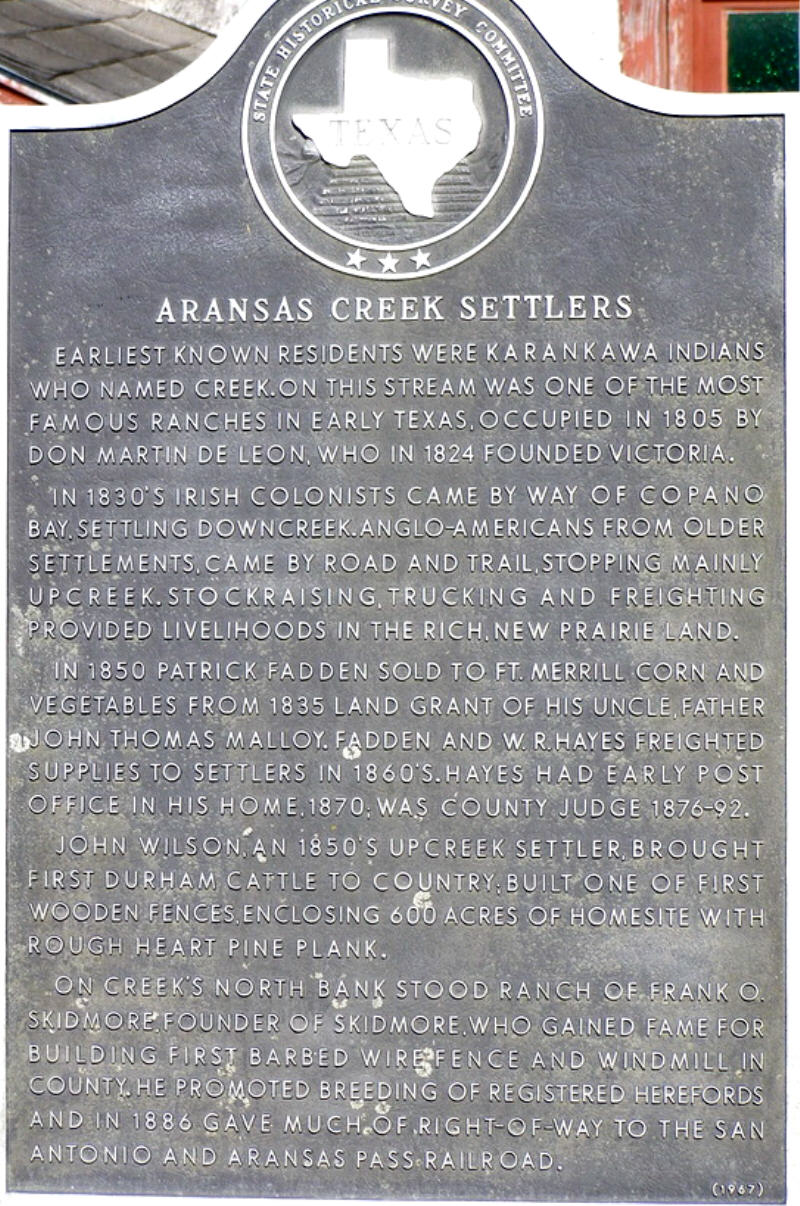Aransas Creek Settlers
 Just off U.S. 181 on South Side of Aransas Creek
Just off U.S. 181 on South Side of Aransas Creek
Earliest known residents were Karankawa Indians who named creek. On this stream was one of the most
famous ranches in early Texas, occupied in 1805 by Don Martin de Leon, who in 1824 founded Victoria. In 1830's, Irish
colonists came by way of Copano Bay, settling down creek. Anglo-Americans from older settlements came by road and trail,
stopping mainly up creek. Stock raising, trucking and freighting provided livelihoods in the rich, new prairie land.
In 1850 Patrick Fadden sold to Fort Merrill corn and vegetables from 1835 land grant of his uncle, Father John Thomas MaIloy. Fadden and W. R. Hayes freighted supplies to settlers in 1860s. Hayes had early post office in his home, 1870; was county judge 1876-1892. John Wilson, an 1850s up creek settler, brought first Durham cattle to country; built one of first wooden fences, enclosing 600 acres of homesite with rough heart pine plank.
On the creek's north bank stood ranch of Frank O. Skidmore, founder of Skidmore, who gained fame for building first barbed-wire fence and windmill in county. He promoted breeding of registered Herefords and in 1886 gave much right of way to San Antonio & Aransas Pass Railroad.
In 1850 Patrick Fadden sold to Fort Merrill corn and vegetables from 1835 land grant of his uncle, Father John Thomas MaIloy. Fadden and W. R. Hayes freighted supplies to settlers in 1860s. Hayes had early post office in his home, 1870; was county judge 1876-1892. John Wilson, an 1850s up creek settler, brought first Durham cattle to country; built one of first wooden fences, enclosing 600 acres of homesite with rough heart pine plank.
On the creek's north bank stood ranch of Frank O. Skidmore, founder of Skidmore, who gained fame for building first barbed-wire fence and windmill in county. He promoted breeding of registered Herefords and in 1886 gave much right of way to San Antonio & Aransas Pass Railroad.

